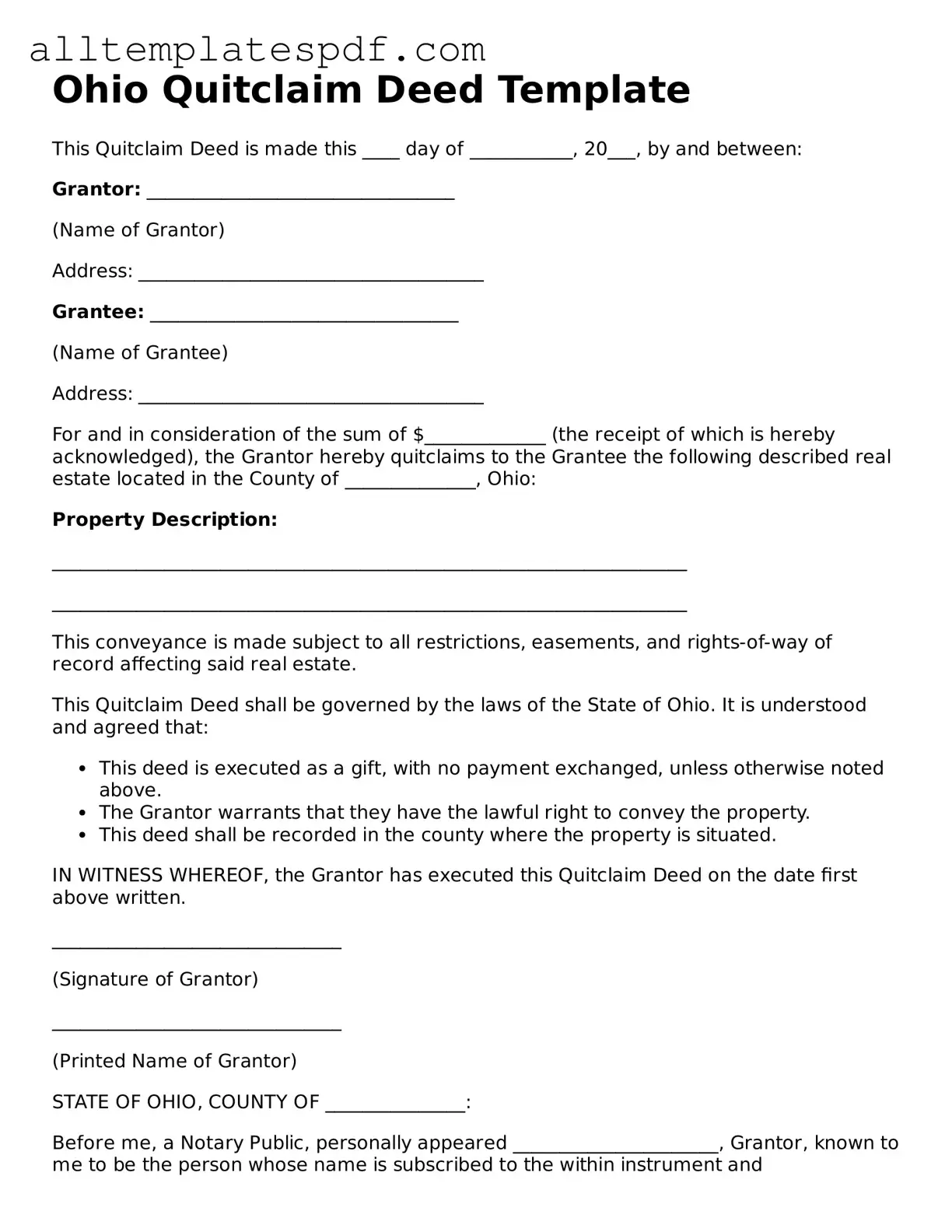Filling out the Ohio Quitclaim Deed form can be straightforward, but many individuals make common mistakes that can lead to complications. One prevalent error is failing to provide the correct legal description of the property. This description must be precise, including details such as parcel numbers or boundaries. Omitting this information can result in the deed being invalid or contested.
Another mistake involves incorrect names of the parties involved. It is crucial to ensure that the names of both the grantor and grantee are spelled correctly and match their identification documents. Any discrepancies can create confusion and may delay the transfer of property.
Many people overlook the requirement for signatures. Both the grantor and, in some cases, the grantee must sign the deed. If a signature is missing, the document will not be legally binding. Additionally, some individuals forget to have the deed notarized, which is a critical step in the process. Without notarization, the deed may not be accepted by the county recorder.
Another common error is not including the date of execution. The deed should clearly indicate when it was signed. This date is important for establishing the timeline of the property transfer. Failing to include it can lead to confusion regarding ownership.
Some people may also neglect to check local recording requirements. Each county in Ohio may have specific rules regarding the format and submission of the Quitclaim Deed. Not adhering to these requirements can result in the deed being rejected or delayed.
In addition, individuals sometimes forget to pay the necessary fees associated with recording the deed. These fees vary by county and must be paid at the time of submission. Failing to include payment can lead to the deed not being recorded at all.
Another mistake is not providing a proper consideration statement. While Ohio does not require a specific amount to be stated, it is essential to indicate that something of value is being exchanged. This can prevent misunderstandings about the nature of the transaction.
People often underestimate the importance of including a mailing address for the grantee. This address is necessary for future correspondence and tax purposes. Omitting it can lead to complications down the line.
Lastly, some individuals may not keep a copy of the completed Quitclaim Deed for their records. Retaining a copy is vital for future reference and can serve as proof of ownership. Without it, individuals may face difficulties if disputes arise later.
